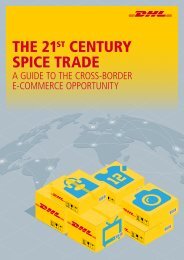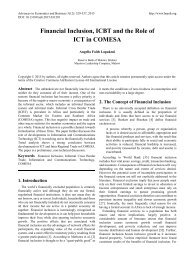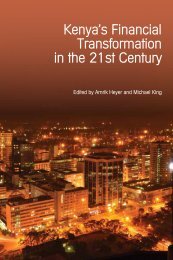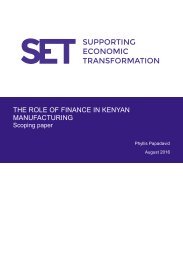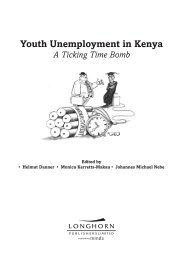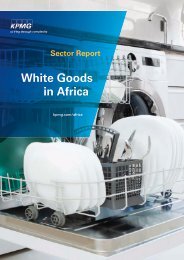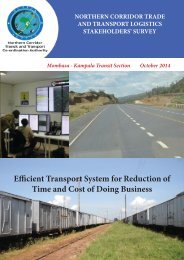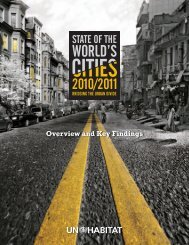FD
gvti301SEaf
gvti301SEaf
Create successful ePaper yourself
Turn your PDF publications into a flip-book with our unique Google optimized e-Paper software.
the great banking houses, highly profitable—international<br />
monetary order.<br />
Wartime dislocation and deficit financing of reparations<br />
and reconstruction costs delayed the removal of restrictions<br />
in Europe, but starting with the 1924 Dawes Plan—<br />
under which American banks made loans to Germany to<br />
help that country pay for reparations—U.S. banks entered<br />
a period of massive international lending ($1 billion a year<br />
during 1924–29). Half of that was destined for Europe,<br />
partly intermediated by British banks, and it spurred a huge<br />
economic and financial boom.<br />
But this resurrection of the liberal international order<br />
did not last long. When a speculative frenzy in the New<br />
York stock market drew capital to the United States, Europe<br />
suffered a sudden stop. In July 1931, unable to roll over<br />
maturing obligations, Germany declared a moratorium on<br />
foreign payments and imposed exchange restrictions, which<br />
triggered a run on the pound that forced Britain off the gold<br />
standard; numerous other countries followed suit.<br />
What ensued was a decade of almost dizzying capital flight,<br />
devaluations, exchange restrictions, and capital controls<br />
(nearly all on outflows), protectionism, and imploding global<br />
trade—contributing to the global Great Depression. Notably,<br />
however, it was mostly the autocratic and authoritarian<br />
regimes in Europe—such as Austria, Bulgaria, Germany,<br />
Hungary, Portugal, and Romania—that imposed exchange<br />
restrictions and outflow controls (democracies preferred<br />
tariffs). In Germany, the July 1931 restrictions were extended<br />
and broadened by the Nazis, under whom violations were<br />
potentially punishable by death; exchange controls thus<br />
became thoroughly associated with the excesses of that regime.<br />
By 1935, as the U.S. economy began to emerge from the<br />
Great Depression, and against a backdrop of worrisome<br />
political developments in Europe, capital began surging<br />
to the United States. The resulting speculative boom and<br />
swelling of U.S. banks’ excess reserves (which threatened to<br />
precipitate an inflationary spiral) prompted Federal Reserve<br />
Chairman Marriner Eccles to argue that there was “a clear<br />
case for adopting measures to deter the growth of foreign<br />
capital in our markets.”<br />
Yet the United States did not impose inflow controls.<br />
Extrapolating from the experience of European countries<br />
trying to prevent capital outflows, American officials<br />
concluded that to be effective, restrictions had to<br />
be broad-based, covering both capital and current<br />
account (that is, trade-related) transactions.<br />
Perhaps more important, the capital outflow<br />
restrictions imposed by undemocratic, dictatorial<br />
regimes engendered a general distrust and<br />
distaste for such measures. Henry Morgenthau,<br />
Jr., the U.S. secretary of the treasury, summed up<br />
the prevailing attitude when he wrote, “Frankly,<br />
I disapprove of exchange control.”<br />
White—took from the interwar experience was that a regime<br />
of unfettered capital flows was fundamentally inconsistent<br />
with the macroeconomic management increasingly expected<br />
of governments, and with a liberal international trade<br />
regime. (Capital outflows required governments to impose<br />
import restrictions to safeguard the balance of payments<br />
and gold reserves. On the inflow side, hot money flows<br />
could lead to speculative excess—in turn requiring monetary<br />
tightening that could damage the real economy.) Given the<br />
choice, Keynes and White preferred free trade to free capital<br />
flows—especially to short-term, speculative flows and flight<br />
capital. Hence the emphasis in the IMF’s founding charter<br />
(the Articles of Agreement) is on current, rather than capital<br />
account, convertibility and on the explicit recognition that<br />
countries may need to impose capital controls.<br />
Despite opposition by powerful New York banking interests,<br />
which succeeded in watering down key provisions in<br />
the IMF’s Articles regarding capital controls (Helleiner,<br />
1994), the Bretton Woods era was characterized by widespread<br />
use of controls (see chart). As in the interwar period,<br />
these were controls mainly on outflows rather than inflows;<br />
unlike during that period, however, they were typically not<br />
exchange restrictions but specifically capital controls.<br />
Although advanced economies were generally more<br />
restrictive than emerging markets in the early Bretton<br />
Woods years, by the 1960s, they were liberalizing—partly<br />
because the rising trade integration made it difficult to<br />
restrict capital transactions without also affecting current<br />
transactions. This trend was occasionally interrupted<br />
as countries such as Britain and France faced balance<br />
of payments pressures or crises. Even the United States<br />
imposed outflow restrictions in 1963 and broadened<br />
coverage through the decade as its<br />
balance of payments worsened.<br />
On the other end, countries<br />
that received increasingly large<br />
capital flows on speculation<br />
that the dollar<br />
Bretton Woods and beyond<br />
The lesson that the main architects of Bretton<br />
Woods—John Maynard Keynes and Harry Dexter<br />
Finance & Development June 2016 49



